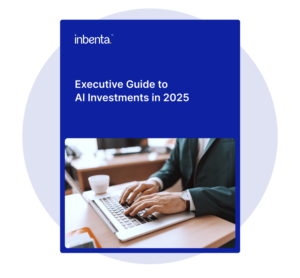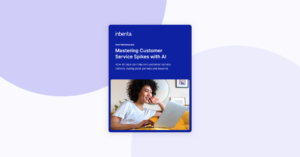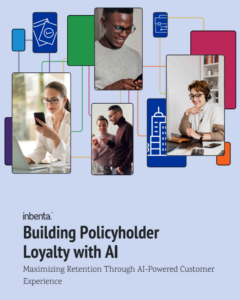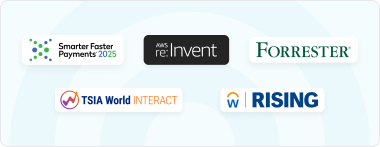Digital transformation is affecting nearly all industry verticals and sectors, as companies begin to look to technology to facilitate processes, strategies and save resources.
The Covid-19 pandemic has disrupted businesses even more, introducing changes in how they deliver their services, cater to customer and staff needs and in nurturing their relationship with their employees. The sudden switch to remote work has introduced additional work to Human Resources, who have had to revamp their people management operations and respond to the massive influx of employee requests for assistance. Recruitment processes have had to adapt to new remote procedures, along with safety measures and the creation of new Covid-19 policies in addition to an HR team’s usual tasks.
HR teams are swiftly adopting automated workflows as they shift from manual, paper-based processes, and spreadsheets to embrace HR service automation with the assistance of the latest technological advances. HR leaders understand that agile and fast-paced HR automation services can help their companies keep up with evolving business needs.
What is HR automation?
HR automation is the process of boosting the efficiency of a company’s HR department solving repetitive tasks and allowing HR staff to focus on more complex, strategic matters.
Many HR teams have challenges to overcome, such as reduced HR budgets or staffing that require them to do more with an HR automation tool that can automate manual tasks, simplify documentation procedures, relieve the burden of HR staff, and ensure compliance.
Additionally, an important facet of HR services is recruitment and onboarding procedures that can be done more transparently and efficiently while reducing manual errors, using smart filtering. This can also apply to other processes such as timesheet management, appraisal processes or any informative tools so that HR teams can be in constant contact with the company employees and assist in helping them when needed.
In multinationals, where teams can often be dispersed over numerous countries and time zones, there is also an increased need for HR teams or proficient self-service capabilities to be available 24/7 to assist whenever an employee may need their help.
With all these new tasks at hand, and an increasing number of remote employees requesting assistance, HR teams are often overwhelmed with support requests and the increasing need to provide a scalable, frictionless self-service offering to their employees to reduce waiting times, especially during specific enrollment periods, and often a result of inefficient self-service options and a high number of repetitive requests.
Benefits of HR process automation
The benefits of using HR service automation are noteworthy, to such extent that HR automation is no longer a mere advantage, but a necessity. Here are some benefits of HR service automation:
Increased Accuracy
HR automation can ultimately lead to better hiring decisions. It may seem a bold statement, but even smoothly managed organizations are prone to human error. Mistakes are impossible to foresee, and we are only human after all. However, errors can trigger a lot of additional work, time, and money to get things right. They can also affect employee morale and efficiency. HR workflow processes can be quite complex, and HR automation can streamline workflows and reduce manual errors.
Saves time and lets teams focus on critical issues
Generating vast amounts of new remote hiring documents or tending to customer needs away from the office can be complicated. The streamlining of processes cuts the excessive workload on HR employees and reduces burnout on administrative work. This allows HR to focus on complex, strategic and critical policies and procedures. The use of bots and HR service automation completes repetitive manual tasks swiftly and accurately while bridging process gaps. This lowers the stress of overworked HR staff while improving employee satisfaction, increasing their productivity and strengthening employee retention.
Cost-effective
Reducing human error and automating procedures decreases the costs associated with amending these errors, but also the huge prices usually associated with HR software that include features that may not be necessary for a specific HR team. As opposed to stand-alone HR systems, HR automation systems can be tailored to each team’s needs enabling businesses to selectively automate the processes they want without having to invest massive sums.
Efficient, consistent and streamlined communication
Keeping all employees on the same page and streamlining communication has become an additional challenge with Covid-19. By automating notifications and reminders, pertinent parties can easily be reminded of important information and receive the answers they need if they interact with virtual agents so that everybody is well informed even if they are not working from the same location or time-zone.
At a moment where there is compliance with changing employment laws, employees have flocked to HR teams asking for clarification on new laws related to remote work including those pertaining to time tracking, overtime, sick leave, and office tools among other issues. Automating responses and using bots can deliver uniform, transparent information to mass requests, facilitate employees to documentation as well as unlock actionable insights to help enterprises make better-informed decisions.
With this, workers will feel supported, and teams are informed of changes that can strengthen communication within the business as well as smoothening onboarding procedures and reinforcing security procedures.
HR Process Automation Trends
While HR automation services are not something new, Covid-19 has pushed companies to work remotely with scarce preparation or the right technological solutions. With all the changes that have arisen during the pandemic, new trends have appeared in HR.
HR service automation is undoubtedly the most relevant trend. The need to simplify processes and streamline workflows to ensure business stability has a clear focus on ensuring that employees are happy and productive despite the changes that have occurred in their work environment. But what do employees expect from HR automation and what opportunities can come from this?
Chatbots can simplify onboarding
Organizations tend to have numerous software tools that every employee must use. This can be an email account, a chat tool, or a project management system among other channels. Finding information can often be a hassle, and when somebody is new to a position, they tend to have many questions to ask, and little idea of where to find the answers.
Chatbots can give employees quick and accurate answers across all communication channels, while also sending personalized alerts and notifications to ease the new employee into the company. They can provide 24/7 information on any company issues, from policies, seminars, documents to how to book meeting rooms or know more about after-work groups.
Employees can receive assistance and training without the need for HR staff
Most employees need some sort of training when they start in a company, but HR staff have scant time to deliver personalized training processes to their new recruitments. The best automated HR services easily ingest and index multiple content sources that can be used to assist employees and HR staff alike.
Chatbots and HR automation services leverage the data taken from the interactions with employees to deliver personalized information on training, seminars or news that can be of interest to the employee. Similarly, HR automation services and chatbots provide self-service capabilities, guiding employees through queries with the use of natural language processing, so that employees can resolve 80% of their support issues and tasks with no team involvement.
Payrolls, time management and internal processes can be delivered more efficiently
Keeping tabs over your team’s workload can be a complicated task. In 2021, companies are looking at ways to automate time and attendance solutions, allowing employees to easily access their rosters and to receive notifications on their working hours to avoid employee burnout. Other processes concerning invoices, AI-driven performance reviews can be handled and virtual assistants who deliver notifications to employees.
Chatbots can push personalized alerts to ensure that employees do not have to open or navigate through the intranet or any other system to find updates.
Automating recruitment efforts
Recruitment processes can be enhanced with the use of AI and Big Data capabilities that can help parse, filter, and find the right candidate from a large stack of data. But chatbots can also be used as part of a recruitment process. With chatbots being increasingly used as part of the digital experience, they can also be leveraged by HR when looking for the perfect candidate and being a key element in an automated recruitment process.
An example of a process could be this: A job offer is published and received many applications, most of which do not meet the requirements for the role. An intelligent resume screening technology automatically parses the candidates to identify the top 25% within your ATS. With the click of a button, candidate interviews can be set up with an automatic email notification being sent.
This is where chatbots can intervene to set up the first set of questions with a candidate and to also respond to any questions quickly while gathering information and learning to detect the better answers and working initial filter before setting up a video interview with a human agent.











